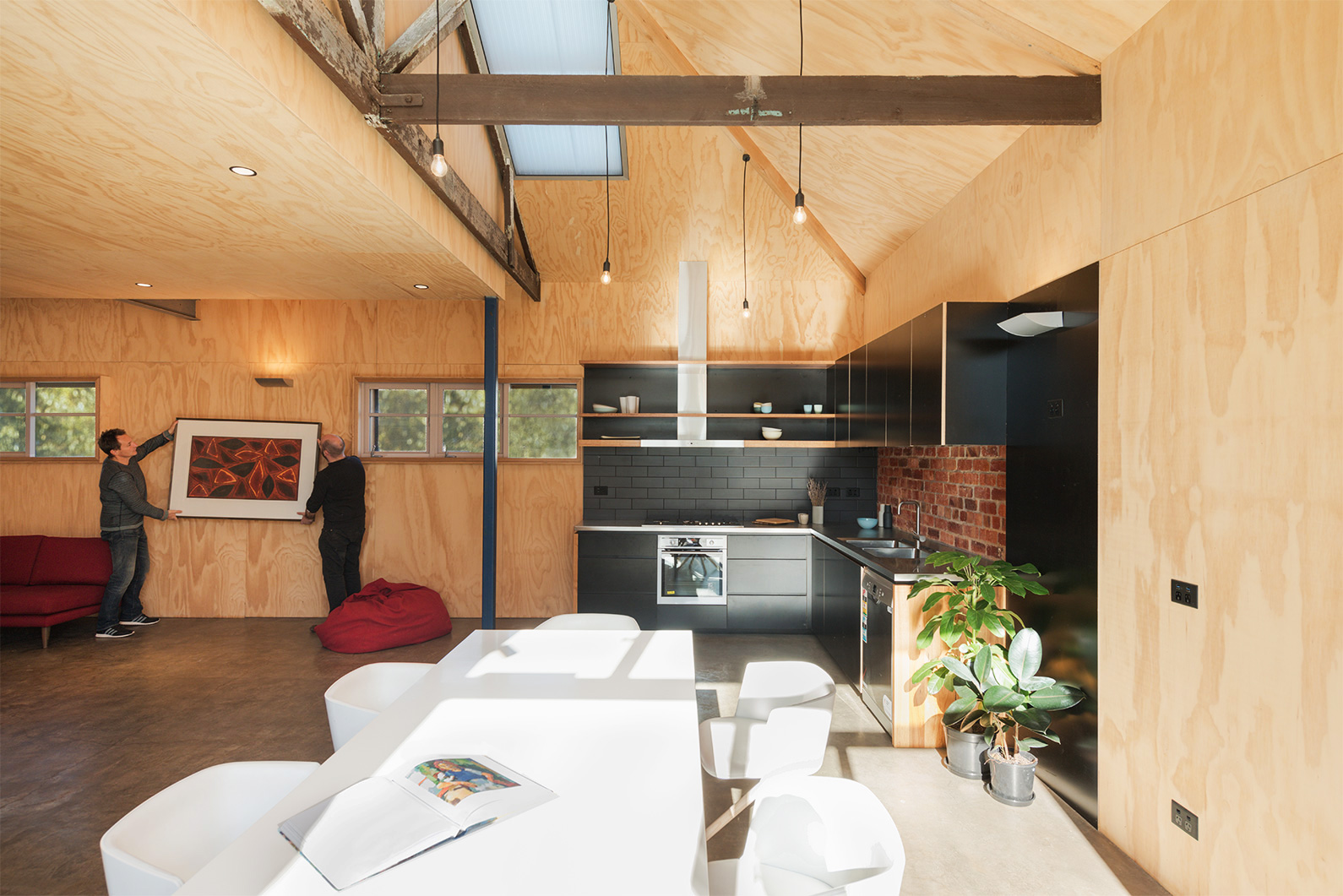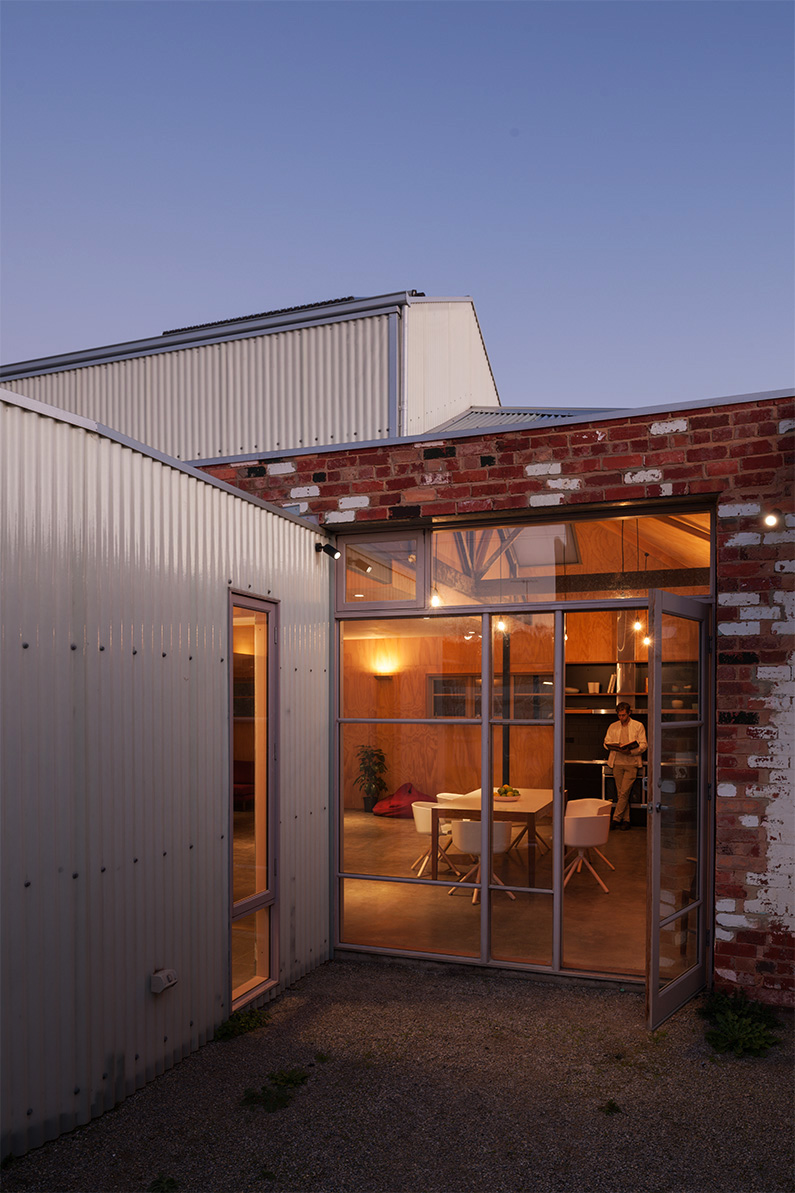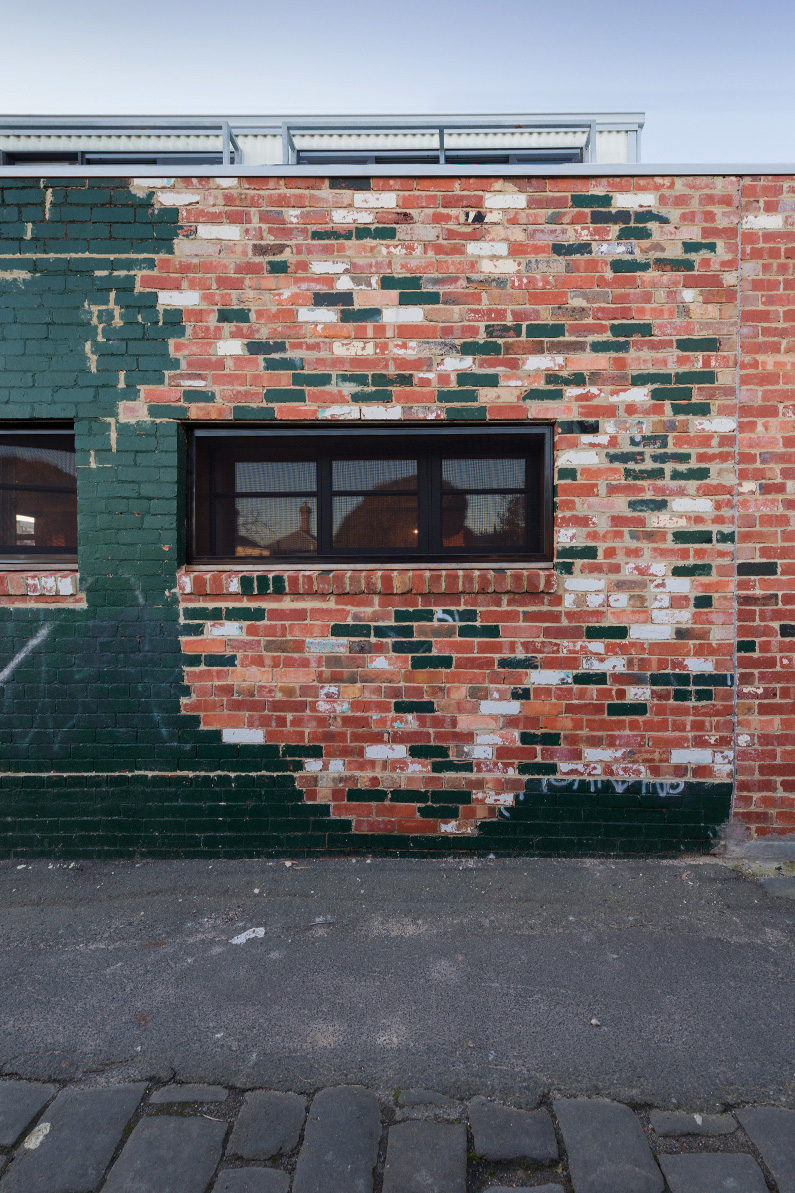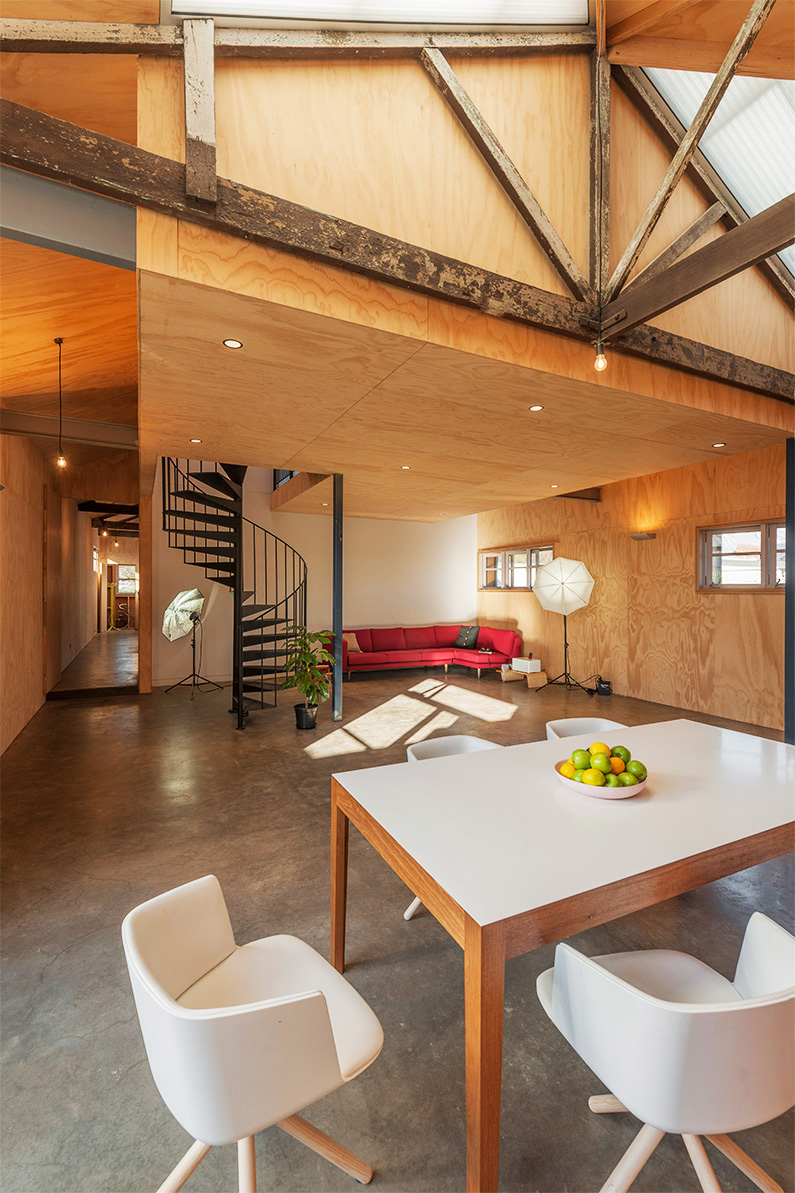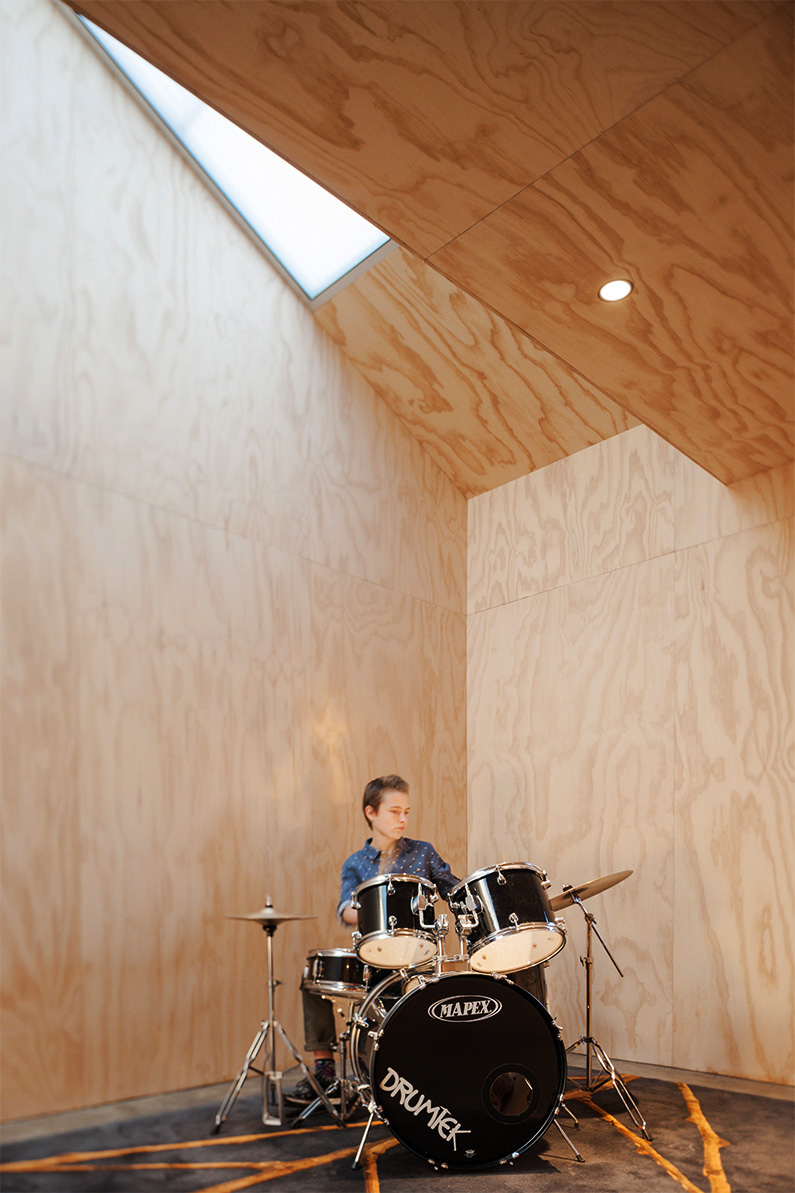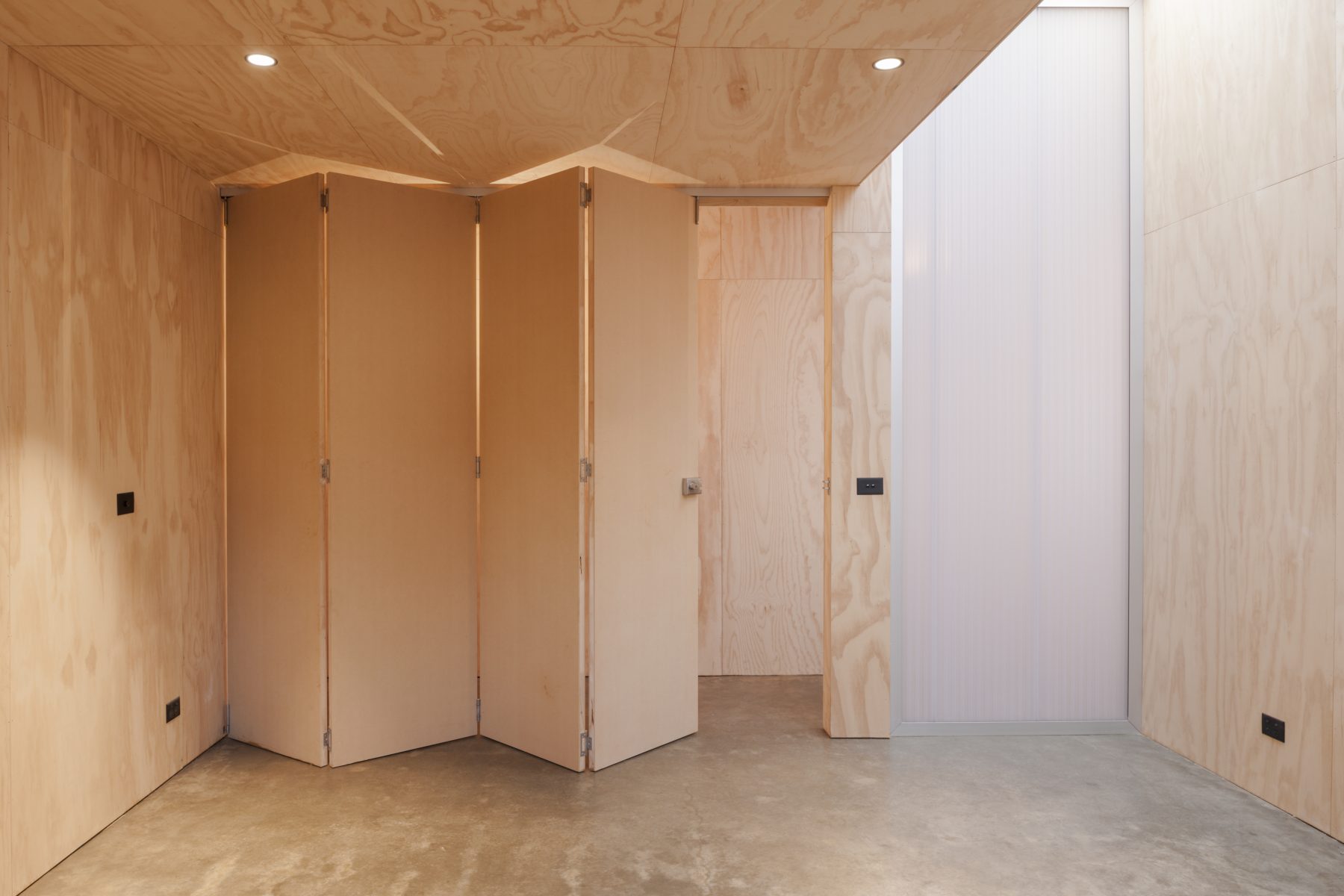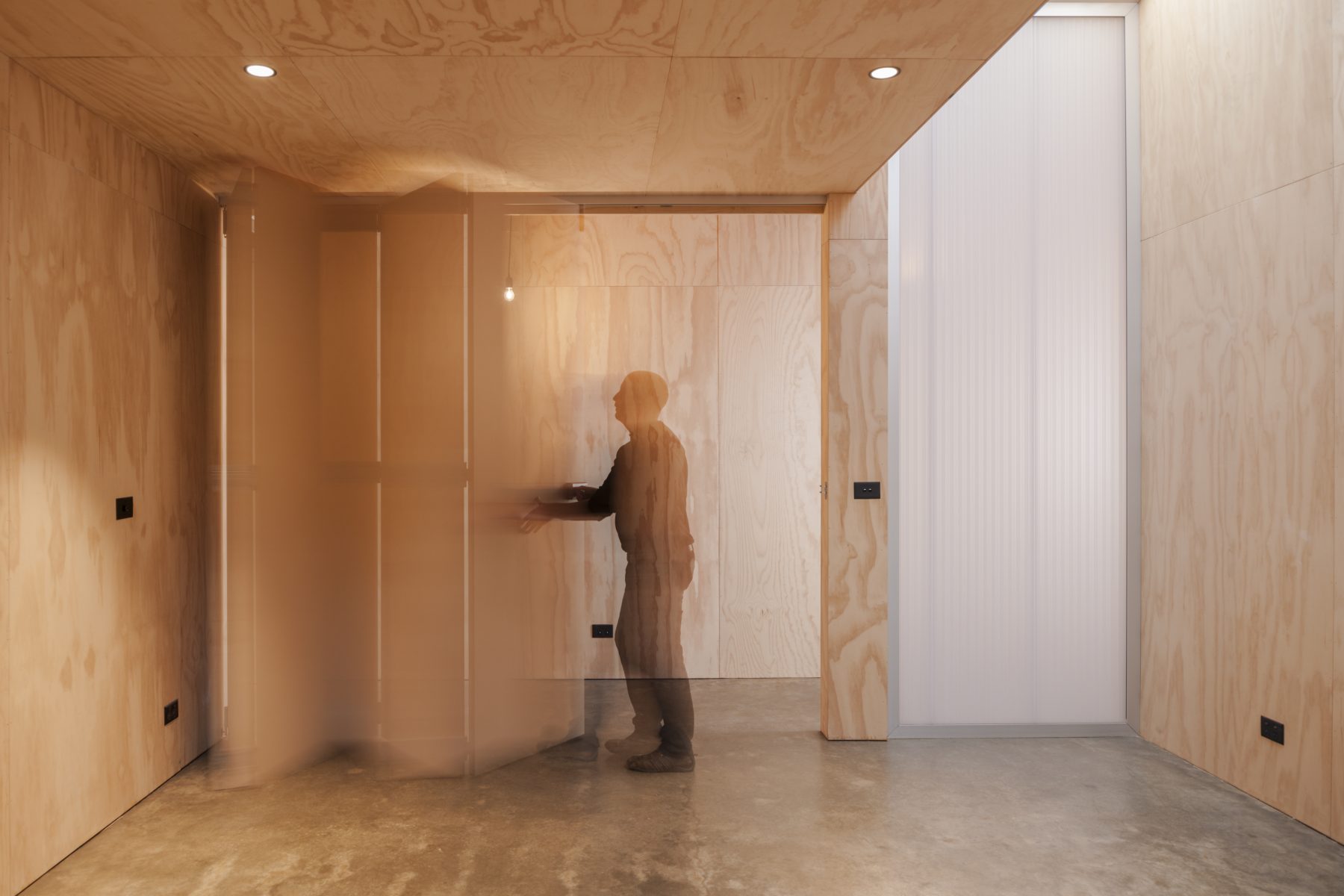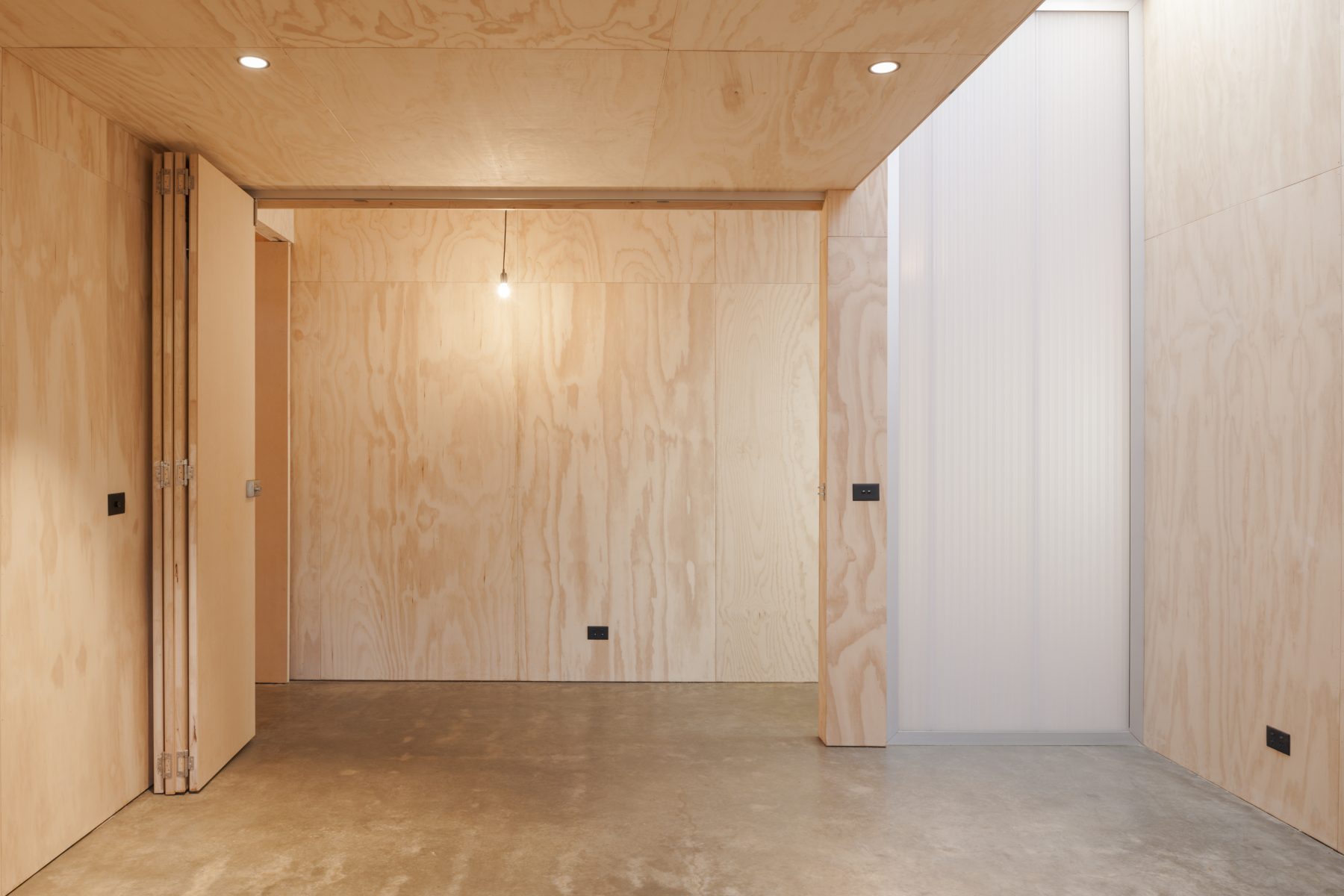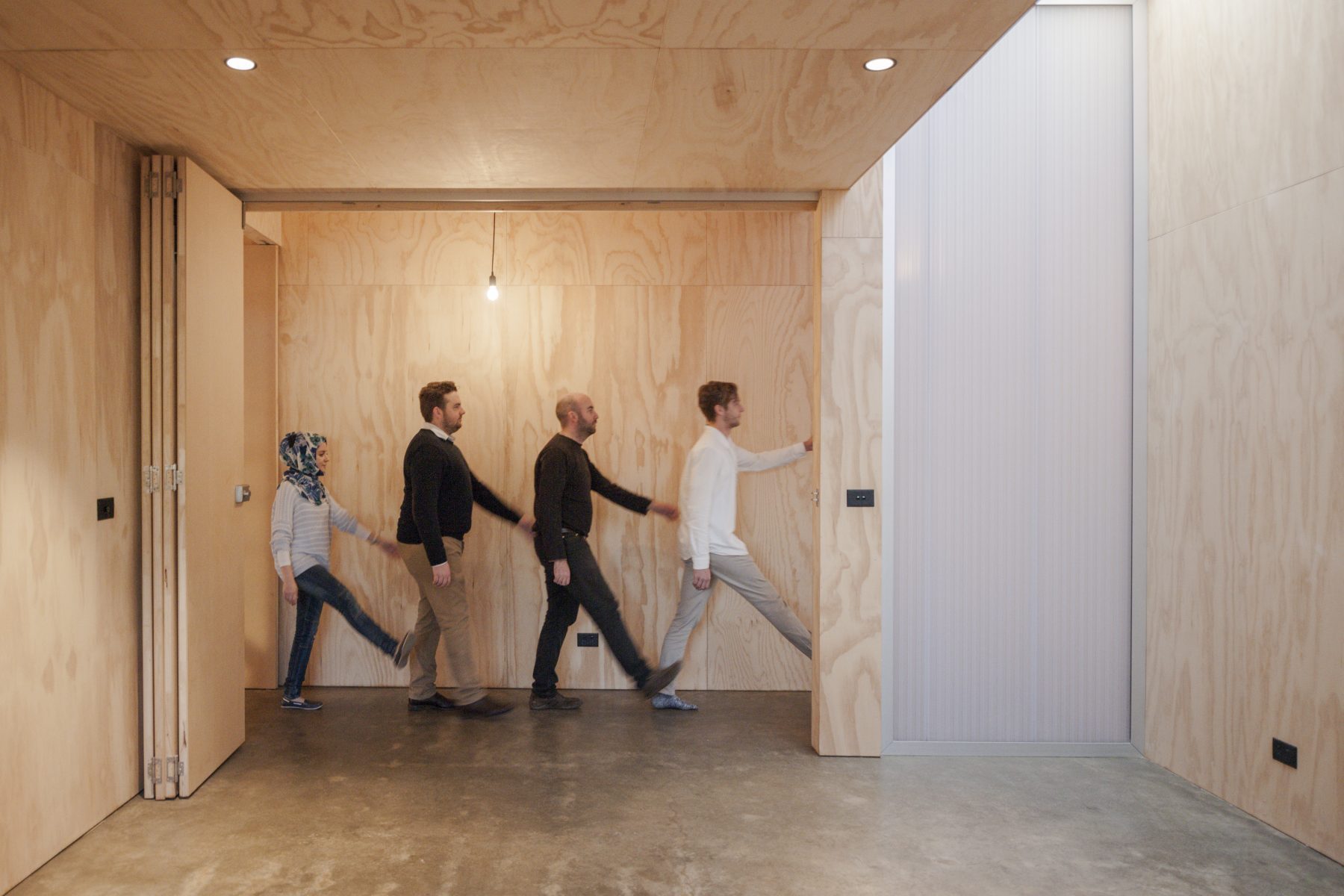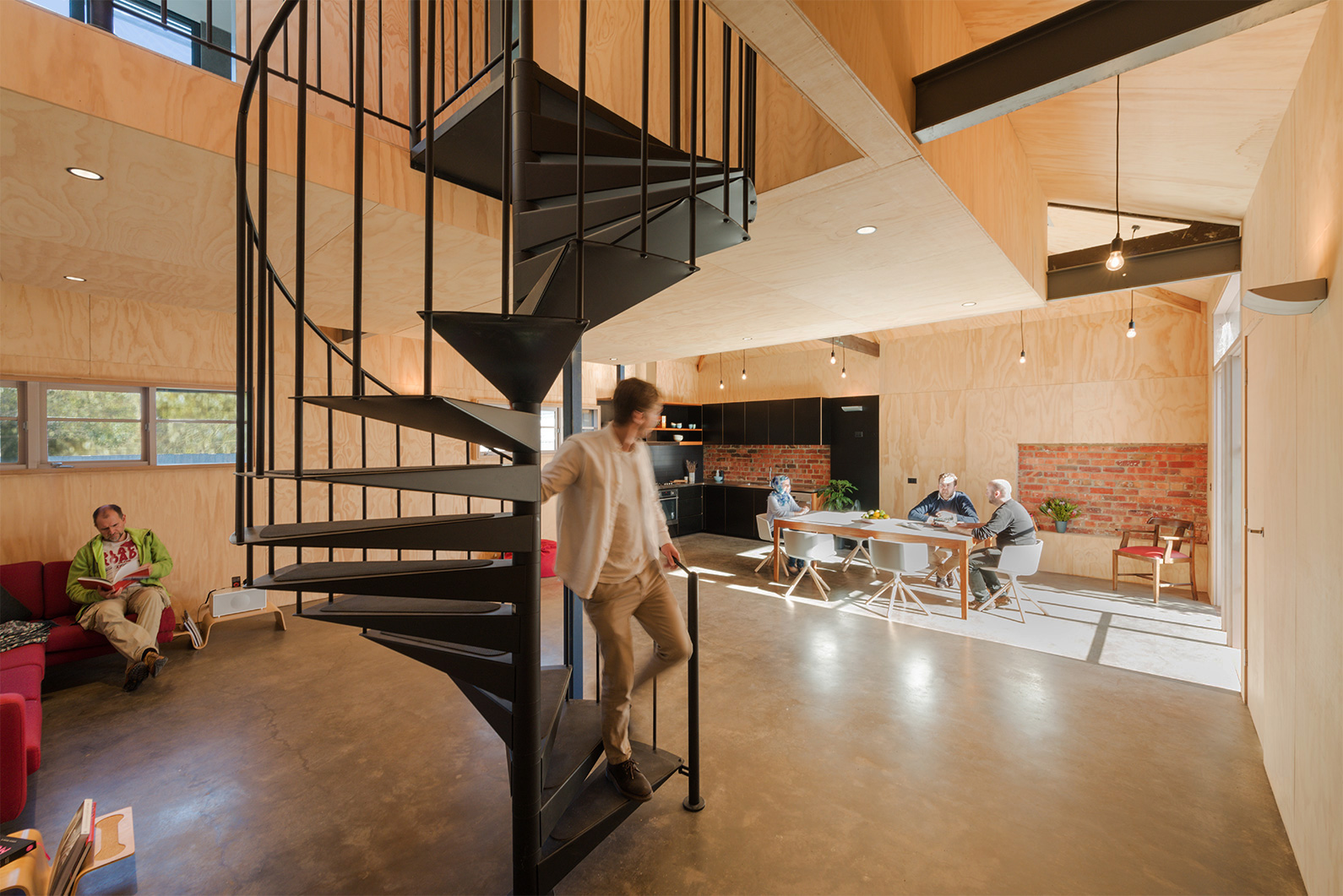The original building formed an integral part of an urban neighbourhood but proved to be too deteriorated to be saved. After exploring options of retaining the existing structure we decided to partly demolish and rebuild the brick shell in its original form with the materials salvaged on site. A new first floor bedroom wing was inserted as a lightweight structure supported by a steel frame and defines the living area below. The studios were built as commercial spaces, making this project more affordable with reduced construction cost.
Our approach of retaining the spirit of the original fabric continued into details. Unfinished materials were employed to create a non-precious environment that is easy to use and maintain.
The former stable and later print factory was purchased with the intention to renovate and turn it into studios and a house. Part of the building’s appeal that was its atmosphere, textures and patina expressing its history.
Careful investigation revealed that the building could not be saved with reasonable means and a conversion could not achieve the required energy efficiency and thermal performance dersired as part of our commitment to sustainable design. Various options were explored: a new house design, prefabricated modular buildings but none suited the brief and made a valuable contribution to the urban fabric in this location.
The driver for our design concept was the contribution of the place to its immediate environment. This led to partially demolishing old walls and roof, removing the slab and rebuilding using the original bricks. Rebuilding enabled the new dwelling to achieve a good thermal performance while maintaining the tactile and aesthetic qualities of an aged structure. Parts of external wall and roof trusses (non-compliant under current structural codes), were kept, reinforced and merged into the aesthetic concept. The new program could be realised with modest and simple insertions and additions.
